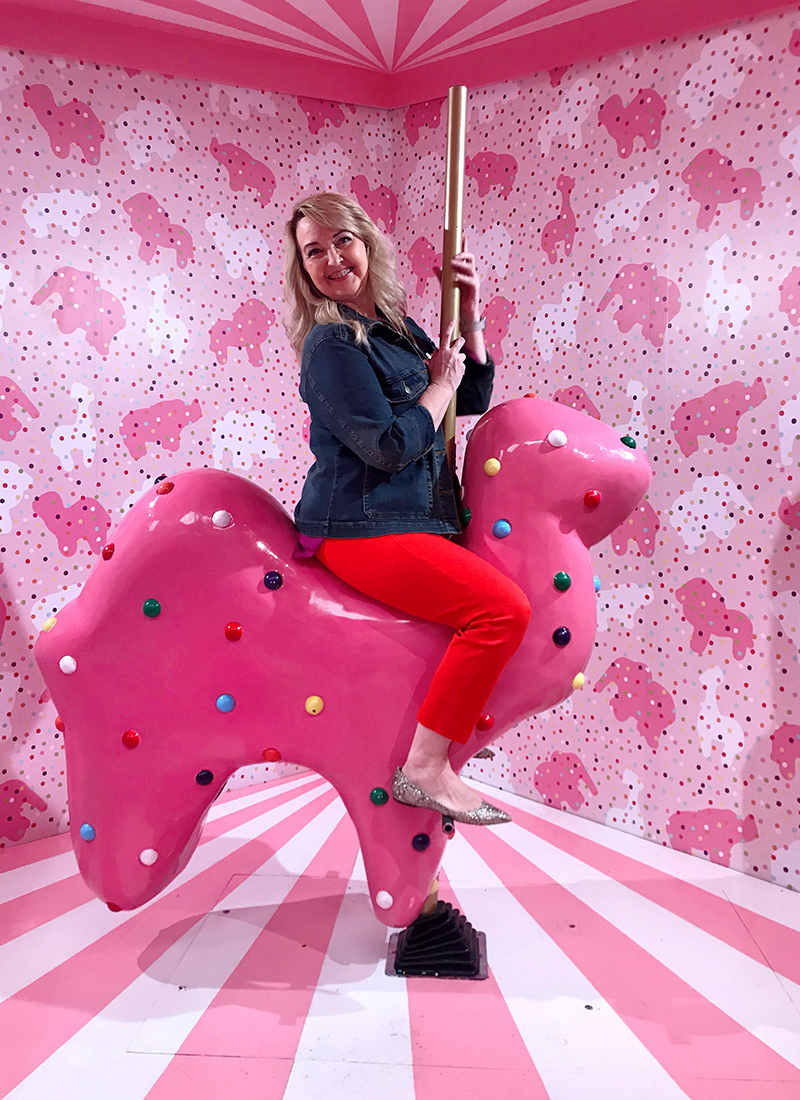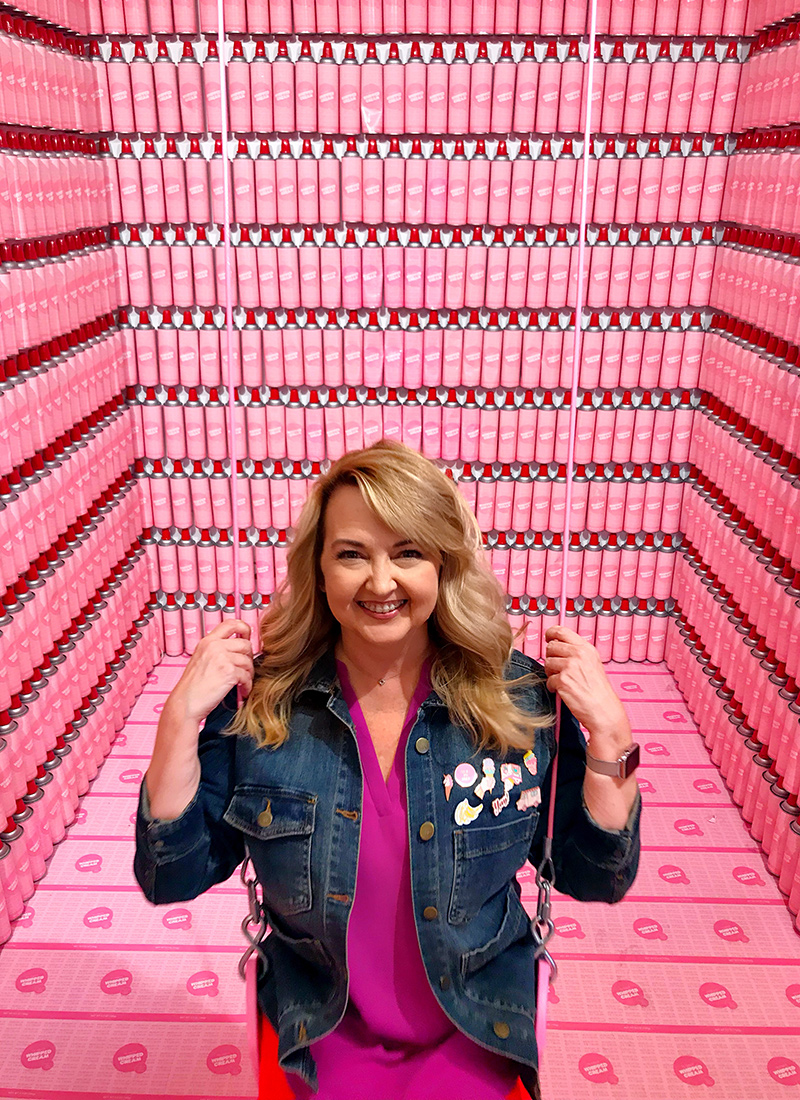from Dai Manuel: Your Lifestyle Mentor https://ift.tt/2OnCgas
Sunday, September 30, 2018
8 Simple and Effective Cooking Tips for a Healthy, Happy Body
from Dai Manuel: Your Lifestyle Mentor https://ift.tt/2OnCgas
Friday, September 28, 2018
How to Help Kids Manage Sleep, Schoolwork and Screens
In the aftermath of a huge New England snowstorm, a friend’s car got stuck driving down KJ Dell’Antonia’s driveway. So she and her four children bundled up and headed out with shovels. After freeing the car once, it slid into a snowbank, and they had to start again as the sun was setting. It was “hard, unpleasant work.” Yet after getting the friend safely on her way, one of the children turned to Dell’Antonia and said, “That was fun!”
This story is emblematic of the paradoxes and possibilities of daily family life. In her new book How to Be a Happier Parent, Dell’Antonia – the former lead editor of the New York Times Motherlode blog – writes about “how to create the best possible family life we can with the hand we’ve been dealt.”
According to her research and lived experience, happier parenting often involves reframing our expectations and approach to the tough spots of family life. From chores to sibling relationships, she recommends first changing how we think about those issues and then change what can be done.
Take family responsibilities. “A kid who has everything done for them begins to see themselves as a job for their parents instead of as a joy or a help,” said Dell-Antonia. This setup harms kids in at least two ways. It leads to an “an artificial sense of their own importance” while also undercutting the vital role children could play in family life.
“Everyone is happier when they are part of a larger community. For kids, the family is that community. When they are part of the day-to-day running of a household, it tells them, ‘I’m part of the team, and without me, things don’t work as well.’ They feel like they are a helpful and necessary part of their family.”
Viewing children as inherently capable changes our approach to interacting with them. “They can do things,” said Dell’Antonia. “But we mostly don’t let them.”
In other words, assume capacity, expect responsibility and keep the lines of communication wide open. This basic approach can help parents and children navigate perennial struggles such as sleep, schoolwork and screens.
Sleep and Teenagers
How do we change how we think about sleep? Abundant research confirms that lack of sleep can have cascading consequences – from poor mental health to emotional reactivity to impaired cognition.
A parent’s instinct might be to either attempt to impose sleep rules or take a completely hands-off approach. But a third way, said Dell’Antonia, is engaging teens in the why and then letting them manage the how for themselves. Instead of focusing on the consequences of sleep deprivation, identify the sleep benefits that will be most appealing to your child – from increasing their speed as an athlete to performing better in school. After all, the teenage brain is more motivated by the possibility of pleasure than by the fear of pain. “If you teach your kids why sleep is important and what it can do for them, they can genuinely want and learn to change,” said Dell’Antonia.
Parents can model this mental shift; “Don’t talk about it as ‘you have to go to sleep’ – it’s not a bad place to go! You ‘get to go to sleep.’ In fact, your morning self is begging you to go to sleep right now.”
Making healthy family sleep habits a reality might involve rethinking schedule – or overscheduling. For kids in multiple afterschool activities, after dinner marks the moment “you finally get free of other people telling you what to do,” said Dell’Antonia. “If they are of the mindset that they don’t get any free time, some of those afternoon activities might need to go. It might be too much. You can’t have better mornings without significant shifts in days and evenings.”
Homework Battles
“In my own research, homework appears among the top four of anecdotally reported stress points for parents,” said Dell’Antonia. “Homework seems to nip away at our feelings of satisfaction as parents,” especially when parents reported getting into regular arguments with their kids about it.
She has a simple message for parents caught up in homework drama: “It’s not your homework. It’s just not. It’s not your job to make sure it gets done. It’s not your job to make sure it gets back in the backpack. It’s not your job to make sure it gets returned to school. It doesn’t matter how it gets done – it’s that they learn how to do it themselves.”
This means parents have to take the long view – weeks, months, “even years,” said Dell’Antonia. If you are deeply entwined, you have to take steps to “extract yourself from the process.” For example, instead of editing a child’s essay, you could instead let them read it out loud to you so they can hear how it sounds to an audience. You can help them structure time and space to get work done – without hovering or micromanaging. If a child really needs more support – but you find yourself in a power struggle – talk to the teacher about options or look for an outside tutor or homework helper.
If family life is not tenable with the current homework pattern, she says to work with your child to shift the responsibility onto their shoulders and tell the teacher “when and if homework gets to you, it will be my kid’s work.”
Screen Time Dilemmas
“Screen time is tough,” said Dell’Antonia. “Life is totally different for our kids than it was for us. We can accept that it is scary and hard for all of us.”
The goal “is not to prevent your kids from using any technology in your house, but teaching them how to manage it out of your house.” After all, no one wants to “send a kid out in the world who is just going to play Fortnight until they run out of food and money!”
In her research, happier families have an ongoing family dialogue about their family’s values and how screens fit into that. And that means adults – not just tweens and teens — are seeking to build and model healthier screen habits.
Once you have a shared vision, there are still details to work out. In her book, Dell’Antonia offers some questions you can use to start a discussion with teens — whether at the dinner table or in the car. These include:
- How much screen time would you consider reasonable on a school night?
- Do you want to consume, or do you want to create?
- When is the latest you think you should be sending or receiving a text?
- Is it hard for you not to look at your phone while you do homework? What would help?
- What are some things you like to do on the weekend? How much of that time do you want to spend on watching things or playing video games?
- What will you do if you get a text that’s scary or sexy or otherwise worries you?
- When your friends are angry with one another, how do you see them using their online connection? How will you use yours?
What does a good parent-child conversation about digital habits look like? “It looks casual. It looks like listening. It doesn’t look like a checklist,” said Dell’Antonia. “Talk about a celebrity who did something stupid on Twitter. That’s an opening! Take every single opening to have a conversation. How does it make you feel when you see a picture of a party you are not invited to? What’s the problem with sending nude pictures? Teens are aware of this stuff. Find a way to make yourself a part of their conversation. If you’re slamming down rules that do not match their needs and understandings, you aren’t in it with them – you are making it all harder.”
Embracing the Happiness of Raising Teens
Parents of younger children often worried about how they will navigate the teen years, and how this will affect family happiness. Remember, said Dell’Antonia, “She is not going to turn into a different kid on her 13th birthday. This is still your child. There are still going to be great moments and bad moments. Bigger consequences, bigger relationships, bigger connections. I will have three teenagers this fall. It’s great, and in some ways, better.”
It’s not always easy to parent a teenager – but then, it’s not always easy to be a teenager. So when they are cranky in the morning or don’t finish their homework, “you don’t need to make it worse,” said Dell’Antonia. “When your kids are having a bad morning, you don’t need to chime in. They know they will be late to school. They know they will face external consequences. You can go with silence, you can go with positivity, but you don’t need to pile on to them … and you don’t need to soak [their upsetness] into you.” At an age when they may want to pull away, let them know, in big and small ways, that they are an indispensable part of the family: “Our kids really thrive when they feel needed, when they feel important.”
from MindShift https://ift.tt/2xK3mPy
Thursday, September 27, 2018
4 Ways to Decorate Your Rental Apartment
Moving into your new apartment and thinking about how you can make it look more like your own space? Try the following ideas and you’ll surely be delighted on how well they can improve your new-found haven.
Install carpet tiles
A clever trick for transforming floors in a rental is to invest in a removable modular carpet square system. Available in solids, textures and prints, the squares are simply placed onto the floor then held together with stickers. The only tool needed for wall-to-wall installation is a utility knife. Once it’s time to pack up and move, the carpet squares can be packed up just like everything else and reused again and again. Source: HGTV
Show off your creativity with wallpaper
If you love the look of wallpaper but hate the idea of completely losing your deposit, try removable wallpaper to add color or patter n to your space. Try it in small areas that lack personality like entrance halls, closets, or even bathrooms. Just make sure to choose water-resistant wallpaper in wet areas. Source: MyDomaine
Change your window treatments
This is another area where rentals always seem to be sorely lacking. Whether it’s dirty old curtains or depressing vertical blinds, lackluster window treatments just scream “temporary home”. Sort it out by upgrading to fresh curtains (even cheap no-hem IKEA ones can look great) or simple roller blinds. Source: ApartmentTherapy
Don’t be afraid to make a splash
Peel-and-stick tile isn’t just for floors. You can also put it straight over an outdated or ugly kitchen backsplash, and peel it off when you leave (although, depending on how much it improves the apartment’s aesthetics, your landlord might not want you to). If you like a more graphic look, contact paper or vinyl peel-off wallpaper are also attractive, commitment-free solutions; so is double-sided tape and PVC paneling made to look like classic pressed tin.
Or, if you can get away with putting a few screws in the wall, cut a piece of plywood to size and mount it over the existing backsplash—and you’ll have a blank canvas for anything from wallpaper to fabric to subway tile that can be removed without a trace when you leave.
Source: MentalFloss
We can help you with any of your carpet needs. Feel free to give us a call today!
The post 4 Ways to Decorate Your Rental Apartment appeared first on Curlys Carpet Repair.
from Curlys Carpet Repair https://ift.tt/2NMfwkZ
Sibenik Croatia: A Charming Coastal Town for Your Bucket List
Dreaming of a Croatia vacation? Sibenik Croatia is a coastal town with charming streets and waterfall swimming at nearby Krka National Park.

A few months ago Alex, me and our toddler Larson ventured out on a 3 week vacation to Europe. Most of the trip was on the Mediterranean coast, but we made a brief stop to the Adriatic coast in Sibenik Croatia. Why a Croatia vacation? Croatia is blowing up as a vacation destination for its charming Medieval cities and sparkling blue waters. And have you heard of the Croatia waterfalls? The more time we went in Sibenik, the more I grew to love this beautiful region. Should Sibenik, Croatia be on your travel bucket list? Absolutely. Keep reading to learn why.
Related: 8 Secrets: How to Take Better Pictures on Vacation |




Where is Sibenik Croatia?
Croatia has become a hot spot for tourists lately. Sibenik is a lesser known Croatia destination, but it’s absolutely worth visiting (it’s pronounced Shib-en-ik). We decided to visit Sibenik partially because of geography: this portion of our trip was a weekend getaway with our friends who live in Vienna. We flew from Rome to their apartment in Vienna, then the five of us (two couples and a toddler!) drove 7 hours to Sibenik. It was a bit of a hike to get there since we were driving, but absolutely worth it.
Sibenik sits in the middle of the country right on the Adriatic Sea. It’s a Medieval town that’s incredibly charming, dating back to 1066. It actually used to be part of Venice for most of history, so it has an Italian vibe. One of Sibenik’s recent claims to fame is that an episode of Game of Thrones was filmed there. If you visit there, you’ll see why — I don’t know anything about the show, but even I could tell the backdrop is perfect for a medieval fantasy storyline. The rough stone buildings and winding streets become more and more magical the more time you spend in Sibenik.


Things to do in Sibenik
Most of what we did in Sibenik wander around the picturesque streets, eat food, and go to the beach. Pretty much the perfect Croatia vacation, if you ask us! Our Airbnb was near the beach, so every morning we would walk to the beach. (Though it was further from the town, we enjoyed staying in the area near the beach; more below on where to stay.) Here is the view of Sibenik from the beach. Pretty ideal, right?


Long strolls in the historic town center are a must. In the center of town is the St. James Cathedral, which is on the UNESCO World Heritage List. Completed in the 1400s, it’s mysteriously beautiful. (And yes, this was where one of the Game of Thrones scenes was filmed.) I’ve seen lots of European Cathedrals, and this one has become one of my favorites. There’s something about it that’s eerily intriguing. We also wandered around and got lost in the maze of tiny narrow streets of Sibenik.



Aside from the town center, you can also walk along the waterfront near the sailboats and yachts, and get ice cream. There’s also a little playground for kiddos in that area (and a trampoline, which Larson would have loved if he were older).


Of course, some of our favorite memories were eating…and swimming in waterfalls! Keep reading.
Croatia waterfalls: Krka National Park
Have you heard of the Croatia waterfalls? There are two major national parks in Croatia with pristine waterfalls: Plitvice and Krka National Parks. The Krka waterfalls are a bit smaller and not as well known as Plitvice, which is partly why we chose Sibenik as our destination. Krka National Park is under a 1 hour drive from Sibenik. We hoped the Krka waterfalls would not be crowded, but there were more people than we expected (we visited in July)! So, we’d recommend if you go to go as early in the day as possible.
In the midst of a rather dry landscape, Krka National Park is an oasis, full of blue green streams and lovely falls. One of our favorite parts was the hike down to the waterfalls. Wooden paths take you right over the impossibly green water with tangled trees overhead that feel like a Cypress grove. But of course the falls were just magical. The water was crystal clear and I carefully waded in with Larson. It felt like the most surreal experience to actually get to be in the water: and of course Larson was completely delighted! I hope that these falls will be treated gently enough that humans will continue to be able to swim in them. It was a total highlight of our trip!








Where to eat in Sibenik Croatia
Another highlight of Sibenik was the food. We didn’t run into the most traditional Croatian food at the restaurants we ended up at, they were delicious nonetheless. One restaurant we enjoyed was Bounty, a small, family owned restaurant right on the water. The food had quite a bit of British influence (think fish and chips), but we had two more traditional dishes: octopus stew over polenta and my risotto with zucchini and broad beans. The Croatian dry white wine was fantastic.


One of our favorite restaurants was called SHE Bio Bistro, which had more of a hippie California vibe crossed with Croatian food. The highlight of this meal was the Dalmatian potato salad (Sibenik is on the Dalmatian Coast). It was so simple, but intensely flavorful with tangy potatoes, olive oil, salt, red onions, capers, and a sprinkle of parsley. One of the other standouts was an orange & almond polenta cake, with the texture of cheesecake but made with polenta, ground almonds, eggs, yogurt, and rum. This one was Italian inspired, and we noticed a lot of Italian influence in the food of this region (like lots of truffle pasta, etc). After all, Sibenik was a part of Venice until almost the 1800’s.


We also stopped at the farmers market and got some delicious pastries, including this spinach and cheese filled filo pastry called burek! It was fantastic and if you go, you must keep an eye out. We did a little research and found that many countries in Eastern Europe, the Mediterranean, Balkans and Western Asia serve burek. Traditionally the burek in Serbia, Macedonia, Croatia, Montenegro and Slovenia is round and filled with meat or cheese.

Where to stay in Sibenik Croatia
In Sibenik we stayed in this Airbnb. While it wasn’t quite our decor style, it had a lovely view of the water and was a 5 minute walk from the beach. It was also about a 15 minute walk into the historic center of town. For me, an ideal vacation is steps from the beach and a short walk to town, so this was the perfect locale. (We picked the same type of location in Tellaro, Italy.) Our Airbnb owner was the kindest, most charming couple who had big gardens and even dropped off some produce they had grown so we could cook it for dinner! As nice as it is to stay in hotels, we love renting houses especially when traveling with kids: having access to a kitchen and having the ability to meet locals are two huge perks.

A fun surprise: World Cup finals
When we picked the dates for our trip, we had no idea that one of the days we’d be there would be the World Cup final. As the weeks approached and the Croatian team kept winning, we crossed our fingers they’d be in the final game. Somehow, Croatia was in the World Cup final and the game took place the last day we were in Sibenik! We got Larson a Croatia jersey and staked out a spot in a local bar. The crowd was incredibly tense as they watched the players in the most important game of their lives.
Sadly, Croatia ended up losing the game. However, the amount of celebration after the game was just as much as if they had won! People were all over the streets in their red and white garb, honking horns, crying, singing, hugging, and shooting off fireworks. When we asked our Airbnb host if he was sad, he said “No! It’s a huge honor to be second. As Croatia we are a small country. We are so proud!”



This, of course, endeared us to the country even more. We had an incredible time in Sibenik and would love to go back someday (especially to Krka National Park!). Are you interested in Croatia as a travel destination? Have you been? Let us know in the comments below!
A Couple Cooks - Recipes for Healthy & Whole Living
from A Couple Cooks https://ift.tt/2xWehVy
Wednesday, September 26, 2018
Tuesday, September 25, 2018
Need Help Paying For College? There’s An App For That
At midnight, Oct. 1, the rush begins.
That’s when first-time and returning college students can get their first look at the 2019-’20 FAFSA, the Free Application for Federal Student Aid. Anyone who wants the government’s help paying for college has to finish the notoriously complicated form. But this year, in an effort to make it easier, the U.S. Department of Education has given the FAFSA a new look: a smartphone application.
“Every year, we handle over 250 million transactions of some shape, form or fashion,” says A. Wayne Johnson, the chief strategy and transformation officer at the department’s office of Federal Student Aid.
The problem, Johnson says, is that students who most need help paying for college often have the hardest time filling out the FAFSA. It asks questions about families’ income and tax status that many low-income students struggle to answer because the only computer in their lives is at school — where their parents can’t help them. That’s why, when Johnson arrived at the department last year, he says, “the very first thing that I wrote on my board was FAFSA.”
As in: How can the department make this thing easier?
Considering the government received 19 million FAFSA forms in 2016-’17, making it easier could help a lot of potential borrowers.
“We want the experience of a student to be every bit as good as if they were a customer of American Express, a customer of a major credit union,” Johnson says.
He should know. His hiring was controversial with some Democrats because he comes from the private banking world. Johnson has worked for VISA and even run his own, private student loan company. Since coming to the department, Johnson says he’s fast-tracked the development of the My Student Aid app.
Ultimately, the department hopes the app will be a one-stop shop for students. A place they can research colleges, check their loan balance and even make a payment. But the real game-changer comes soon, Oct. 1, when borrowers will be able to fill out the FAFSA on their phones using the new app.
“Many families, including low-income families, rely on smartphones solely for their internet access,” says Kim Cook, executive director of the National College Access Network.
Cook says, in the past, many students had no choice but to fill out the FAFSA in a school computer lab. They still can, especially if they’re getting help from a counselor, but now they can also take it home — for the questions that only a parent can answer. They’ll also be able to access the IRS’ data-retrieval tool, which helps students by autopopulating the FAFSA with key tax information.
Cook believes this new app also changes the game for school counselors and advocates, like her, who are trying to spread the word about the importance of applying for federal student aid. A mobile FAFSA allows them “to meet students where they are, at festivals, at football games. To meet parents where they are, maybe at brownbag lunches or financial aid nights.”
Maybe you’re thinking, ‘This sounds great, but what does the Education Department know about building a good app?’
It turns out, Cook’s group worked with the department to do early user-testing.
“Students flew through this app,” Cook says. “It was amazing to see how native they are to using apps. They said the app was easy. Parents as well.”
Cook says they did find a few hang-ups, and the department insists it’s listening and already making changes.
The fact is, this form still won’t be easy for everyone. It never will be — unless Congress radically rewrites the FAFSA. For now, though, students can take some comfort knowing that it may not be easy, but it did just get easier.
9(MDAxOTAwOTE4MDEyMTkxMDAzNjczZDljZA004))
from MindShift https://ift.tt/2Q62Phm
Eat Omega 3 Fatty Acids to be more Awesome in Life
from Dai Manuel: Your Lifestyle Mentor https://ift.tt/2DvKx80
Overcoming Childhood Trauma: How Parents and Schools Work to Stop the Cycle
Many people have experienced some kind of trauma in their childhood, such as loss of a caregiver, substance abuse in the home, homelessness or abuse. There are ten types of “Adverse Childhood Experiences” that were identified in a study conducted in the 1990s. The total number of childhood traumas someone has experienced determines their ACE score. About 2/3s of the people in the groundbreaking study had at least one ACE, but the researchers also found higher rates of adult physical and mental illness associated with the amount of trauma people experienced as children.
But the impact of trauma can be tempered with interventions, including ones that focus on building and repairing relationships with adults.
Residents of Butte County, California, have some of the highest ACE scores in the state. Public health and social services employees aren’t sure why this is, but cite poverty due to a lack of jobs, and high rates of methamphetamine addiction in the 1990s. The county’s office of education took extraordinary steps to address kids’ needs by taking a trauma-informed approach to educating students.
“Children have to be healthy enough to learn,” said child psychiatrist and Stanford professor Shashank Joshi. “That’s something that all school districts can agree on. And mental health is part of overall health.”
At Honey Run Academy in Paradise, California, principal Dena Kapsalis and her staff are careful not to assume anything about their students — what kinds of homes they come from, or even that they have homes.
If it is the case that a student is homeless, which Kapsalis said is common, she and her staff consider this when acknowledging a student. “We know that there’s nobody getting you up in the morning. We know that you’re on your own and yet you’re here,” said Kapsalis. “It’s five minutes before the school starts. That tells us that you want to be a student today that tells us you want to be successful today.”
The school’s environment is built from the idea that each student is an individual and that every interaction is significant. Even a student’s added selection of fruit with a meal is recognized. Multiply those moments over the course of a day, a week, a month and you start to see children growing healthy enough to learn.
TRAUMA AND PARENTS
As a parent, Sabrina Hanes, 33, is conscientious of the experiences she wants to pass on to her daughter, Aroara. She experienced a lot of pain, violence and neglect growing up.
“I have a score of 8 and that’s huge,” said Hanes, referring to her Adverse Childhood Experiences score. “But here I am still, I’m doing it. I’m making it work.”
When she first learned she was pregnant, a doctor recommended she seek services from Youth for Change, a nonprofit in Paradise that, among other things, helps kids and adults who’ve had serious childhood trauma. For years, she took advantage of their parenting classes and child development offerings. These days, she and her daughter participate in Parent-Child Interaction Therapy.
This type of therapy, which focuses on improving communication between parent and child, has been proven to help with behaviors like tantrums and aggression in kids.
Hear how staff and teachers work with kids who’ve experienced serious trauma, and how Sabrina and Aroara heal together on the latest episode of the MindShift Podcast. Listen on Apple Podcasts, Google Play, NPR One or wherever you get your podcasts.
This story was produced as a project for the USC Center for Health Journalism’s California Fellowship. You can also learn more about Sabrina and Aroara Hanes in this California Report story.
from MindShift https://ift.tt/2Dsf7PH
Monday, September 24, 2018
7 Great Reasons All Couples Should Learn How to Social Dance Together
from Dai Manuel: Your Lifestyle Mentor https://ift.tt/2zs7LaW
How Parents Can Help Improve the Quality of a Teen’s Sleep
Within three days of starting high school this year, my ninth-grader could not get into bed before 11 p.m. or wake up by 6 a.m. He complained he couldn’t fall asleep but felt foggy during the school day and had to reread lessons a few times at night to finish his homework. And forget morning activities on the weekends — he was in bed.
We’re not the only family struggling to get restful shut-eye.
“What parents are sharing with us is that the ‘normal life’ of a typical American high schooler is interfering with sleep,” says Sarah Clark, co-director of C.S. Mott Children’s Hospital National Poll on Children’s Health at the University of Michigan.
In the poll of 2,000 parents from various ethnic groups and backgrounds that Clark and her team published this month, 1 in 6 parents say their teen experiences frequent sleep problems — “having trouble falling asleep or staying asleep 3 or more nights per week.”
More than half the parents say it’s because their teens won’t get off their electronic devices, and 43 percent blame irregular schedules with homework and activities.
A significant percentage of parents say their kids worry about school (31 percent), and 23 percent say their teens stay up worrying about their social lives.
It’s likely that the numbers of teens who have trouble sleeping is even higher than the poll of parents suggests, Clark says, because kids can hide their nighttime electronics use and parents may not frequently check in on older children.
How can parents help? Start with knowing what kids need.
The average American teenager gets seven hours of sleep a night, wedging it in between homework, outside activities, dinner and maybe a job. But research suggests teens need more like nine hours.
Unfortunately, even their bodies work against them, says Mary Carskadon, a longtime sleep researcher and professor of psychiatry and human behavior at Brown University. As children grow into the middle and teen years, they are naturally inclined to go to bed later and sleep later in the morning. But an early school start time doesn’t allow it.
“If kids’ body clocks are shifting later and the school is starting earlier, there’s no time left to recover,” Carskadon says.
She and Clark have evidence-based tips for weary teens and their parents:
- Put electronics away and out of reach. Research has long shown that screen time interferes with good sleep because it’s stimulating, and those “blue light filters” that minimize the most troublesome part of the spectrum won’t help much if you’re stressed out. So do whatever it takes to make sleep hours electronics-free. “If I were an entrepreneur, my get-rich-quick scheme would be the family tech lockbox,” says Carskadon. (There are already a few phone lockers in the works or on the market that may do the trick.)
- Instill a regular bedtime routine. Try to turn the lights out at around the same time and wake up at the same time, even on weekends, because the evidence shows you can’t really “make up” missed sleep on the weekends.
- Sleep masks are useful, but avoid long naps. Sleep masks can help create an environment conducive to sleep, says Carskadon, as can trying to prevent sleepy kids from taking long, late afternoon naps. A 20-minute nap might be refreshing, but longer sleep sessions during the day can make it harder to get good rest at night. “The kids who struggle most at night are the ones who will be falling asleep in school, going to the nurse’s office, and pouring a bowl of Cheerios and falling asleep in them,” Carskadon says.
- Limit caffeine — even more than you already do. After school, many teens grab a soda or an energy drink to power through the rest of the afternoon. But this just makes going to bed on time more difficult, which, in turn, makes the next day harder. The disruptions add up. In the Mott survey, 54 percent of parents had their teens limit caffeine in the evening, notes Clark, although she suggests cutting it back earlier in the day or even completely.
- Pull back on the crammed schedule. This is antithetical to what many parents of high school students and some students themselves think they should do to get into college. But does your teen really need to star in the school play, run for student council and be the starting quarterback for the high school football team? “Pick one,” says Carskadon.
- Teach time management. If you don’t have four hours straight to get homework done at night, break it up into chunks. “If you have 45 minutes before your activity, go to the library and get one or two subjects out of the way,” Clark suggests.
- Before trying a drugstore sleep aid, talk to your doctor. The Mott survey suggests parents frequently turn to remedies like melatonin and over-the-counter drugs like Tylenol PM or NyQuil. But Clark encourages parents and teens to discuss these with a physician first. Melatonin isn’t always gentle or effective, and scientists still don’t know much about its long-term effects, according to the National Institutes of Health. And the heavy use of OTC drugs can be habit-forming and hard on the liver.
- Pursue policy changes. Most sleep scientists say it would be healthier for older children to start school later in the morning than most U.S. school districts do. The California Legislature passed a bill last month requiring most middle schools and high schools to start no earlier than 8:30 a.m. by 2021, but Gov. Jerry Brown vetoed it on Thursday. Such a change nationally won’t come easily. “The school start time issue is very fraught,” Carskadon notes. Many teachers are fighting it, and working parents may not be able to shift their schedules and other child care obligations.
Meanwhile, Clark and Carskadon say, the most effective thing we parents can do is listen to our kids — talk with them about their sleep challenges and help them set a regular sleep schedule. It’s never to early (or too late) to find healthy ways to relieve daytime stresses that can disrupt sleep at night, whatever your age.
Best idea yet, parents: We can set a good example, by putting our own electronics away — really away — at bedtime.
9(MDAxOTAwOTE4MDEyMTkxMDAzNjczZDljZA004))
from MindShift https://ift.tt/2OLekdT
Sunday, September 23, 2018
The Museum of Ice Cream

Hey guys! I’m sad to say summer’s over, but it was a pretty great one. I’ve been traveling more than I usually do from Miami to San Francisco to Canada to Las Vegas. You probably noticed there’s been less baking lately. It’s been busy. But, I’m glad to have taken time to do some fun stuff along the way. Like riding jumbo animal crackers and swimming in sprinkles.
Here are a few pics from my visit to the Museum of Ice Cream in San Francisco. Since it started in 2016, it’s been a traveling exhibit of the sweetest kind. You may have seen or heard about one popping up in Los Angeles, Miami or New York over the past two years with all kind of unique ice cream exhibits.

Now, keep in mind, this is more of an experience than it is educational. But that’s perfectly fine with me because it was so much fun!

The Museum of Ice Cream in San Fran is in this cool old bank building and as of last week, it’s now going to be a permanent exhibit in the city. So if you’re into sweets and planning a trip to San Francisco, think about swinging by, but make sure to order tickets in advance because they don’t sell them at the door.

There are a bunch of instagram-worthy installations throughout the museum.

So much eye candy! And as you make your way through all the rooms, you’ll be treated along the way with cotton candy, popsicles and of course you get to taste some ice cream, too.

I really liked the gummy bear room with what I’ll call cake pops sprinkled throughout… Definitely not suckers. ;)

There’s even a sprinkle pool that you can play in.

And swings and such. I may have taken a few boomerangs on these. There’s more pics on my instagram stories and feed if you want to see.

Be prepared to feel like a kid again.
P.S. Yep, those are braces on my teeth, but I finally got them off about a week ago. YAYAYAY!
from bakerella.com https://ift.tt/2DpBdCm
Friday, September 21, 2018
How To Talk To Young People About The Kavanaugh Story
Young people around the country are among those joining the debate over Christine Blasey Ford’s accusation of sexual assault against Judge Brett Kavanaugh in 1982, when both were teenagers.
What are teens learning from all this? And how should adults be handling this conversation?
One night during the summer of 2017, a teenager named Francesca in Virginia was assaulted by a classmate: “I was pinned down and he fondled my breasts and sexually assaulted me.” We’re only using her first name because she’s 15 years old.
Francesca says she struggled at first with coming forward, but eventually became an activist and public speaker on consent and survivors’ rights.
Jules Spector, meanwhile, is an 18-year-old graduate of a private high school in Brooklyn, now taking a gap year before attending Wellesley College.
Spector is also a survivor of sexual assault, and it took her years to come forward. She says she’s willing to use her full name because she is a feminist activist who feels the importance of raising public awareness.
The accusations against Judge Kavanaugh have reminded her of parties she’s attended, and boys she knew in high school.
“A lot of boys that I’ve grown up around have the thought that they can do anything,” Spector says. “And these decisions that they make, whether inebriated or not, won’t follow them later in life because they can just forget about the horrors that they caused people and move on with their lives and become successful.”
She says she admires Christine Blasey Ford for confronting the issue.
“The amount of strength it takes to come forward is unparalleled. And no one does it for attention, because it’s the most painful thing you could possibly do, but also the strongest thing you could possibly do.”
For too many young people like Spector and Francesca listening to the news right now, they’re not learning about sexual violation — because that’s already happened, if not to them then to someone they know.
What they are learning, educators say, is whether the adults in power will take these claims seriously, and whether speaking up results in harsher consequences for survivors or for those accused.
So how are we supposed to talk to our children about all this? Here’s some guidance from experts:
1. It’s your job.
“As parents, you are the primary sexuality educator of your children — whether you’re saying anything or not,” says Debra Hauser, the president of Advocates for Youth, a national nonprofit that works for honest sexual health education. Francesca works with the organization.
When something like this is in the news, as it has been all too often lately, Hauser adds, it’s “a great teachable moment.” Talking about a situation that doesn’t personally affect your kids or someone they know can be a less threatening way to open up the topic.
2. It’s not too soon.
Hauser says conversations about consent and bodily autonomy can — and should — predate any discussion of the mechanics of sex.
“You see two 4- or 5-year-olds, where one wants to borrow the other one’s crayon and they just grab it,” she explains. “And the response that you have is, ‘You have to ask for it. And if that other child says no, you have to respect that and find another way to get a crayon.’ That’s the very beginning of consent education right there.”
3. Give them the information.
Karen Rayne is a sex educator with a nonprofit called UnHushed. She also has a daughter in middle school and one in high school. She says giving kids the facts they need is especially crucial for younger teens. “They’re going to hear whispers and not really have access to full information or the skill set to find that information.”
4. Be the “askable” parent.
In other words, Hauser explains, be the one that your children can come to with questions. She says that, by bringing up tough topics even when they make you uncomfortable, you increase the likelihood that your child will do the same.
Francesca says she confided first in her friends about her assault. It took her awhile to share the story with her mother.
“My mom was surprised and very upset as any mother would be, but she was very very helpful,” Francesca says. Her mother, sadly, had her own experience of sexual violence to draw on. “She knew the process and the importance of reporting the crime to the police.”
5. Or designate someone else they can talk with.
Each year, on their birthdays, Hauser would tell each of her children (who are now grown) to name a trusted adult outside of the family to share hard things with. Things they might be tempted to keep secret because of a fear of punishment, a fear of disappointing a parent, or for any other reason.
” ‘Let’s agree on a couple other adults that you respect that you could go and talk to,’ ” she told them. ” ‘And we’ll go together and tell them that we have this agreement.’ ”
6. Talk to potential perpetrators, not just potential survivors.
When talking about sexual assault and consent, we often focus on victims, and primarily on girls.
But, “it’s the people who are doing the sexual assaulting that need a different kind of education and a different kind of support starting from a very young age,” says Rayne. “About things like [what to do] when they’re attracted to someone or interested in someone and that person rejects them.”
With the right education, says Rayne, a young man might be able to say, ” ‘Oh, you know what? I’ve been drinking too much and I feel like my capacity to make wise decisions is failing me.’ Or, ‘Hey, you know, when someone’s trying to push me off of them, that’s something that I should take as a cue to get off.’ ”
Hauser says the landscape of consent is shifting for this generation, and not only with the #MeToo movement. Guidance issued under President Obama has led to a greater emphasis on sexual misconduct prevention and enforcement on campuses under Title IX. And, several states are working towards adding consent to their high school sex education standards.
But, Hauser and Rayne say, there’s a lot more work to do.
9(MDAxOTAwOTE4MDEyMTkxMDAzNjczZDljZA004))
from MindShift https://ift.tt/2QOEoWY
Thursday, September 20, 2018
4 Ways to Add Character to Your Home
Your home is your sanctuary. It should be as comfortable as possible without compromising style. You’ll want a place that is homey yet it reflects your personality. Doing this task is rather easy if you follow these simple tips:
 Photo by Mengyi Hu on Unsplash
Photo by Mengyi Hu on Unsplash
Transform an empty space
Give an awkward area a purpose and appeal. Transform a basic bay or boxy window into a reading nook. Or furnish an empty corner of the living room with a game table and storage cabinet. Source: BHG
Display your favorite art
Hang wall art to reflect your taste, but avoid using too much of the same style. Place a large mirror vertically on the floor and lean it against the wall for an easy style, or hang it on the wall horizontally for a more formal look. For a whimsical theme, take close-up photos of a few balls of colorful cereal floating in a bowl of white milk. Blow up the photos and frame them. Hang them throughout your living room to create conversation pieces. Source: HomeGuides.SFGate
Mix and match
It’s important to add variety to your space to give it unique character. You can do this by mixing different accents like pillows, or even with accessories. But don’t get carried away with it–if your accessories and accents differ too much from each other, your living room will end up looking like an old antique shop with no rhyme or reason to it. Source: Homify
Brighten up the place
String up lights. Use lighting in your living room to create a mood. Incorporate floor lights for task lighting and contemporary desk lights for atmosphere.
Fairy lights are a simple, budget-friendly way to brighten up a living room. Hang them over mirrors, shelving or door frames to illuminate dark corners.
Don’t forget traditional candles for the evening to give your living room a warmer and more inviting feel. Source: Houzz
Installing a carpet on your flooring can definitely score you additional style points. It would depend on the overall look you’re hoping for, but if you like to add character on a rather plain room, then patterned carpets are just right for you.
Need help on installing a new carpet or giving life to your old one? We can help you out! Call us today!
The post 4 Ways to Add Character to Your Home appeared first on Curlys Carpet Repair.
from Curlys Carpet Repair https://ift.tt/2QIPw7M
 Photo by
Photo by